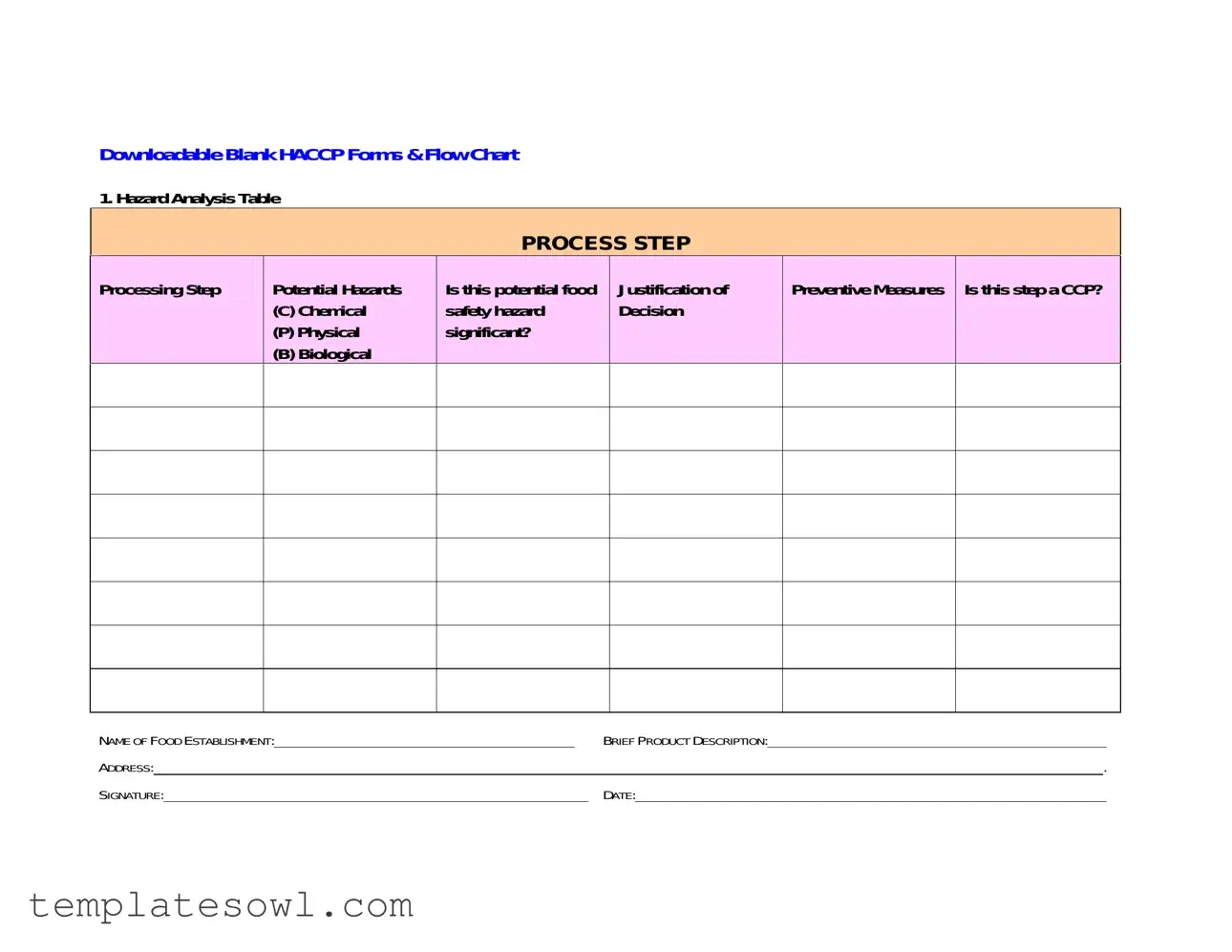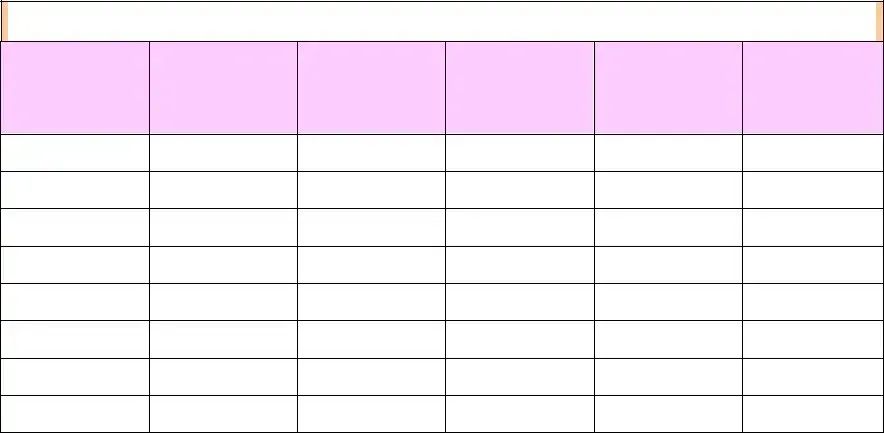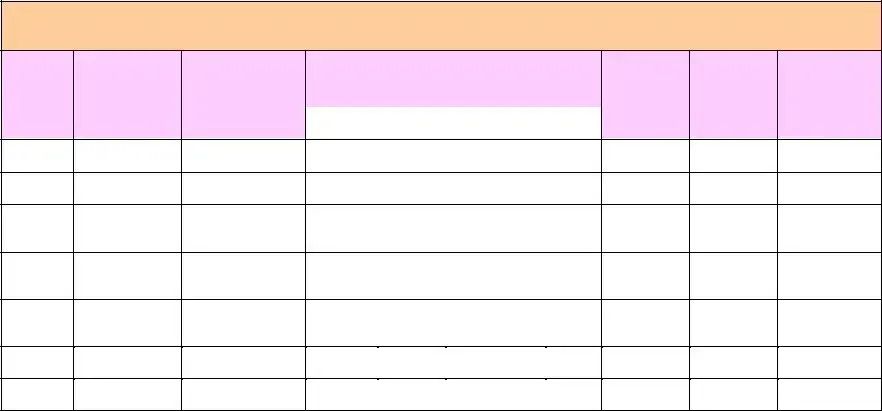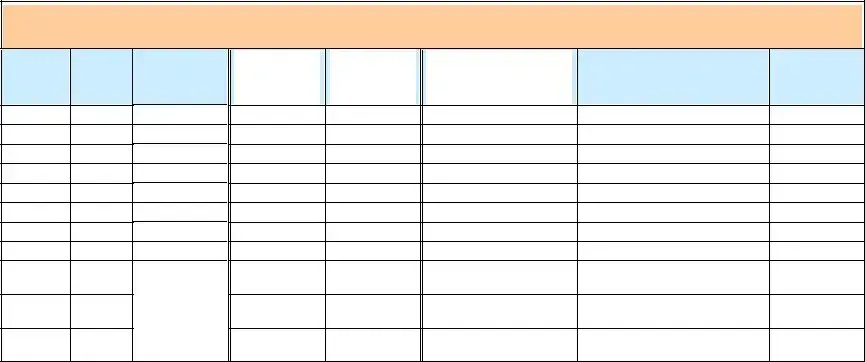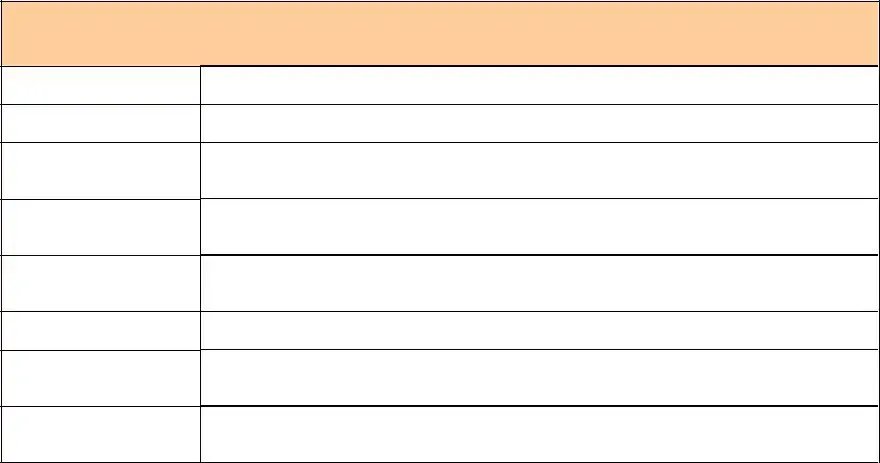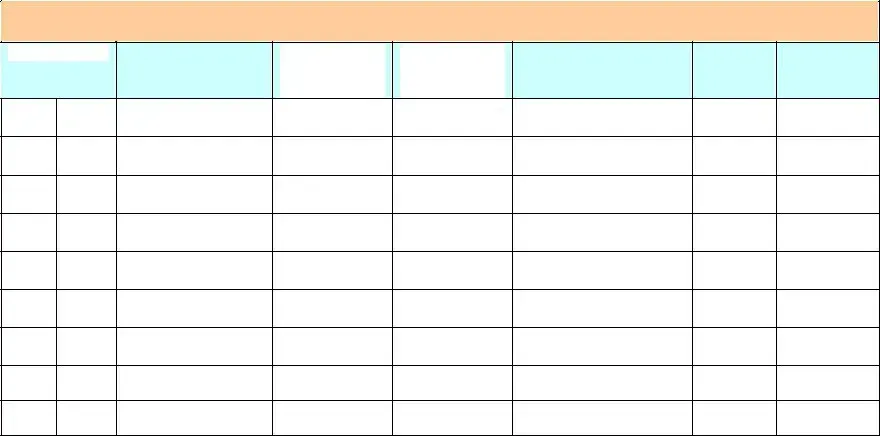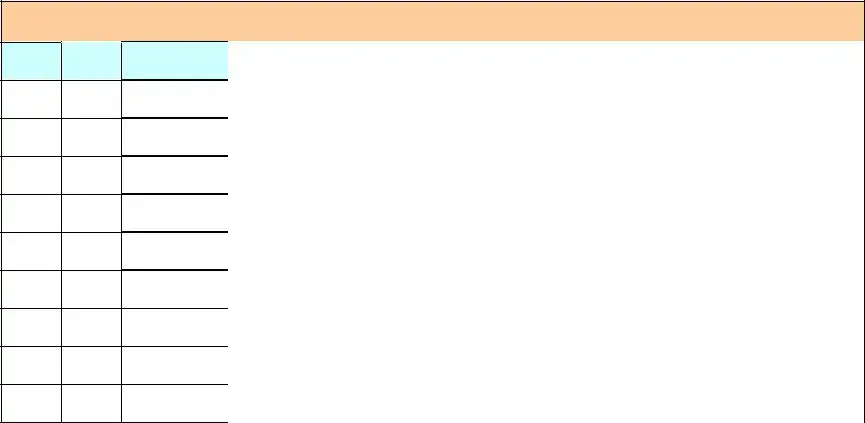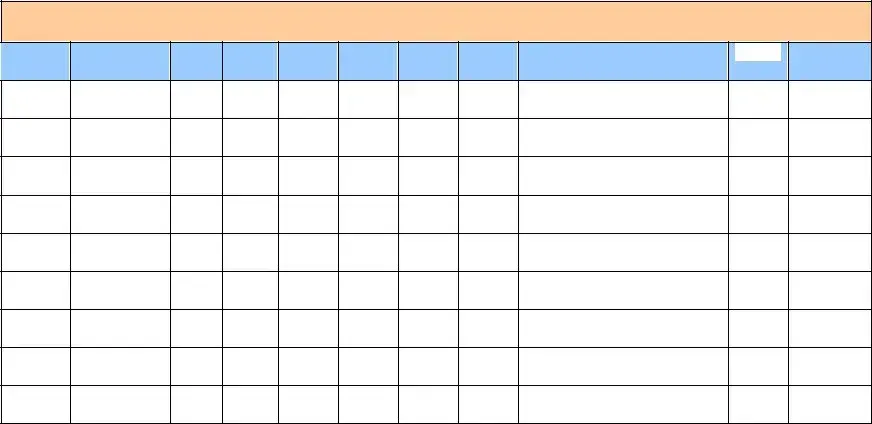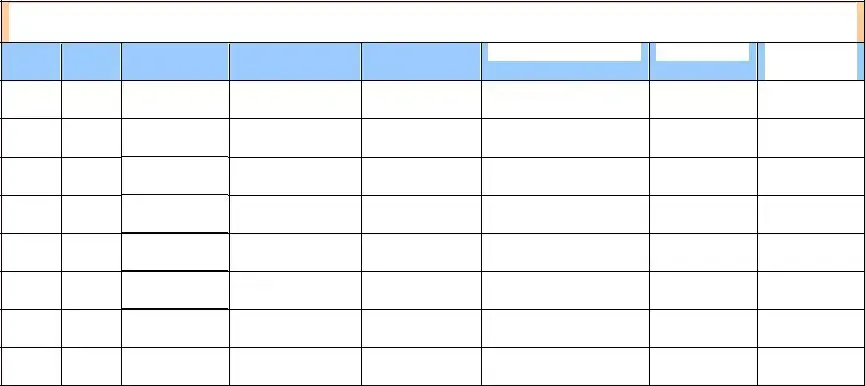What is the purpose of the HACCP form?
The HACCP form is designed to help food establishments identify and manage potential hazards that could affect food safety. It provides a structured approach to food safety management by documenting processes and preventive measures. Through completing the form, establishments can ensure that they systematically analyze each step of their food preparation process to maintain safety standards and comply with regulations.
What information is included in the hazard analysis table?
The hazard analysis table includes several key components. First, it lists the processing steps involved in food preparation. For each step, potential hazards such as chemical, physical, and biological threats are identified. The table prompts establishments to assess whether each potential hazard is significant. Justifications for decisions made regarding the hazards must also be included, along with preventive measures to address them. Finally, establishments mark whether each processing step is a critical control point (CCP).
How should a refrigeration/freezer log be maintained?
The refrigeration/freezer log must be maintained by a designated foodservice employee. This log records the location or description of the holding unit, the date, the time, and the air temperature at specified intervals. Corrective actions taken in response to temperature deviations should also be noted, along with the initials of the food worker. A supervisor must verify that workers are accurately taking temperatures by monitoring their activities, reviewing, initialing, and dating the log daily. Logs should be kept for at least 90 days after food consumption.
What is the procedure for maintaining a thermometer calibration log?
Foodservice workers are responsible for maintaining the thermometer calibration log. In this log, workers record the calibration temperature along with corrective actions taken each time a thermometer is calibrated. Supervisors must verify proper usage and calibration by observing employee activities continuously during operations. The supervisor will review and initial the log daily as well. Like other logs, this calibration log should be retained for a minimum of 90 days after food has been consumed, ensuring that the thermometers remain accurate for food safety.
What does the corrective action log document?
The corrective action log captures important information pertaining to issues found during food handling and safety practices. Each entry includes the product involved, the date and time of the deviation, the cause of the deviation, and how the issue was addressed. Additionally, the log requires documentation about whether the critical control point (CCP) was brought back under control following the corrective actions. Preventative measures and product disposition are also recorded, ensuring a thorough account of any actions taken to maintain food safety standards.
